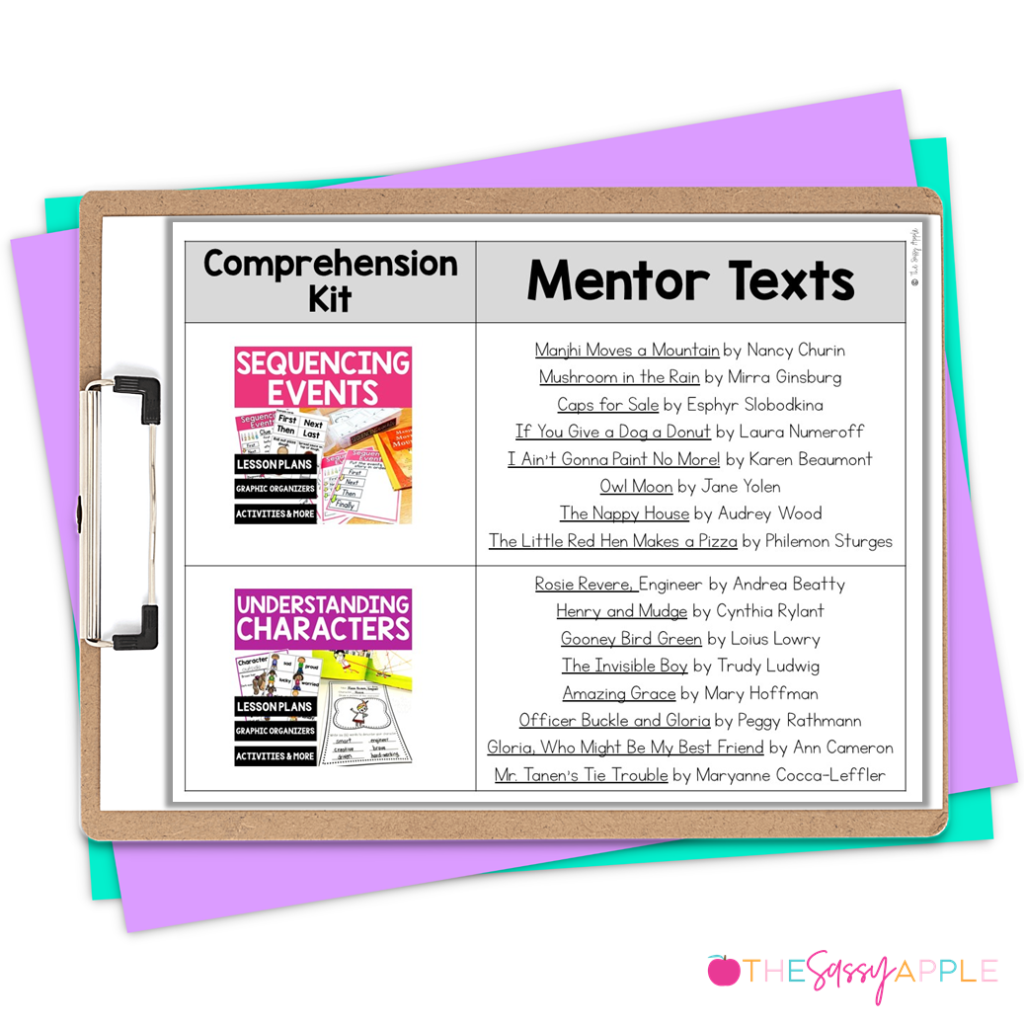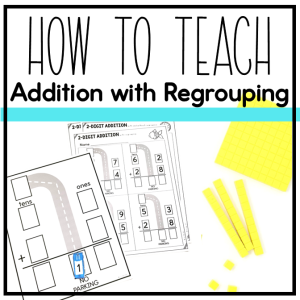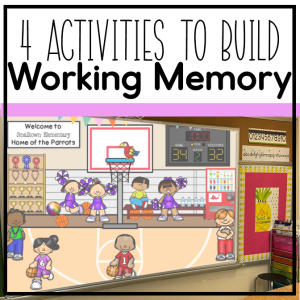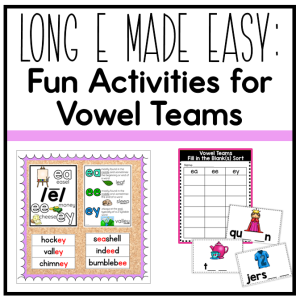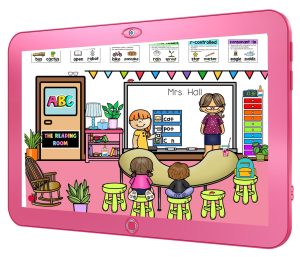Here’s a common scenario: You have a class full of many fluent readers. Their accuracy is strong. But, they struggle with comprehension. Whether it’s an oral retelling or a written response, we need to engage students by using comprehension strategies, such as sequencing events, in a variety of ways so they can apply skills that help with understanding what they read.
Sequencing Events

Sequencing is one of many skills that contribute to a student’s ability to comprehend what they read. Sequencing refers to the identification of the components of a story, such as the beginning, middle, and end, and also to the ability to retell the events within a given text in the order in which they occurred.
Connect to Real Life
Use a common task students do every day to help them practice putting events in order. Picking something that all students do at school (like their daily routines) will help simplify your example and keep everyone on the same page.
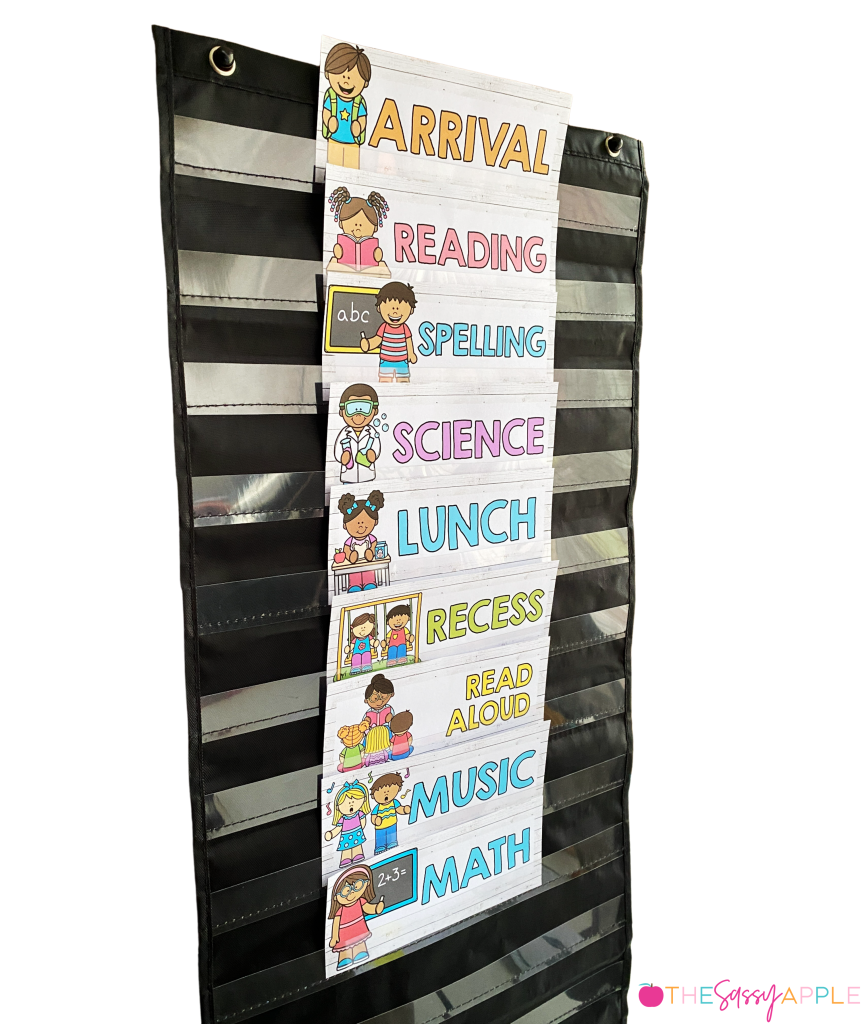
I already have our schedule posted at the front of the room so I simply took the cards down and mixed up the order. Then I had the students help me put it back in order.
Incorporate Vocabulary
Review words to indicate order like “beginning, middle, end” and “first, next, then, finally”. Practice putting events in order. I prepare some examples ahead of time and incorporate reference posters to support student understanding.

Sequencing Strips
For this activity, I have students work in partners. They choose an event and write down the steps in order. Then, they cut out the sequencing strips and swap them with another group to put them back in order.
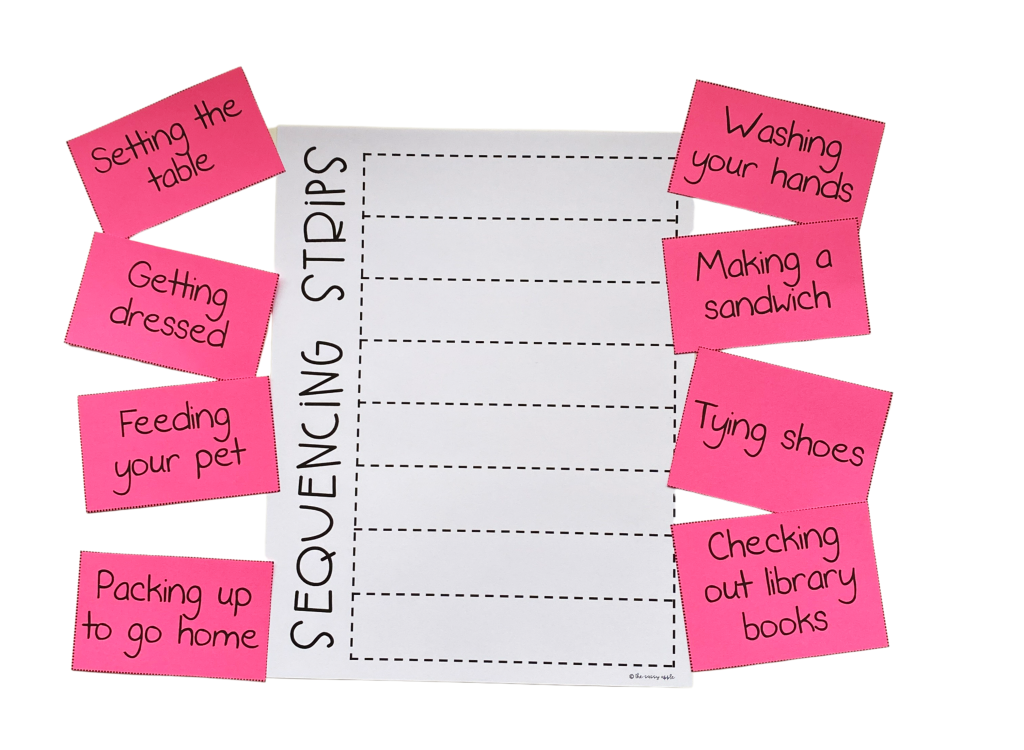
Mentor Texts for Sequencing Events
Now that students have a strong understanding of how to sequence events, it’s time to apply their knowledge to texts.
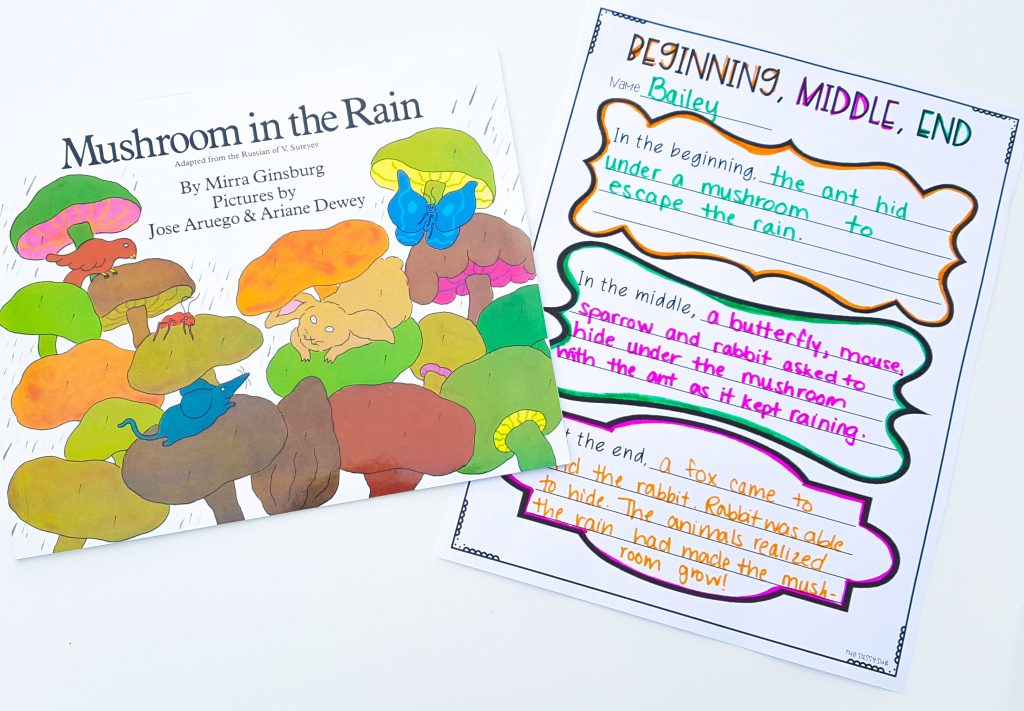
Mushroom in the Rain is perfect for kindergarten, first, or the beginning of second grade. It’s a simple and sweet story with an easy to comprehend the plot. It works well with sequencing because there is a clearly defined beginning, middle, and end. You could even have students draw the animals in the story (or print out pictures of them) and have them put them in order as an extension activity. Here’s a list of some of my other favorite books to use with this skill:
- Mushroom in the Rain by Mirra Ginsburg
- Manjhi Moves a Mountain by Nancy Churin
- Caps for Sale by Esphyr Slobodkina
- If You Give a Dog a Donut by Laura Numeroff
- The William Hoy Story by Nancy Churnin
When you think of sequencing events, what comes to mind? People’s lives are real-world examples of events in order so biographies are the perfect genre for this skill. I just LOVE this book about William Hoy, a lesser-known but influential baseball player, by Nancy Churnin. This book will not only help your students practice sequencing events, but it will also teach them a lesson about the importance of treating others who are different with kindness.

Sequencing Events Graphic Organizers
Using graphic organizers can help make learning about sequencing events more engaging. What I love is that you can pair these worksheets with ANY book! I like to use the same one for the whole class during shared reading and then again with small groups utilizing texts on their level. Helping students gain an understanding of sequencing also prepares them for complex plotlines as their reading level increases. Graphic organizers are an invaluable tool to bring stories to life.

I hope this post for teaching sequencing to students has given you a new book or idea to try out in your classroom. If you’re looking for more resources on teaching reading comprehension, be sure to check out our other blog posts. And don’t forget to grab the free list of these sequencing books while you’re here!
